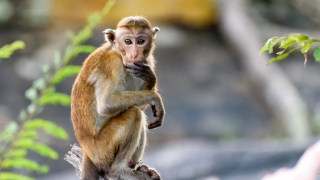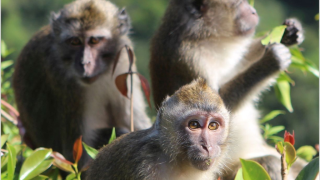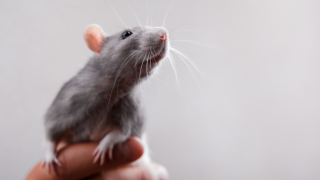AIDS tests on animals are not only extremely cruel, they are also ineffective
Today is World AIDS Day, a time to show support for the people around the world living with this devastating disease. However, over the past three decades, unnecessary suffering has been inflicted on thousands of monkeys in an attempt to find a cure. As we think about the people affected, we also ask you to spare a thought for the monkeys who continue to be subjected to such cruelty.
Monkeys are not susceptible to the HIV virus and do not develop AIDS. The reason they are used in HIV/AIDS research is because they can be infected with simian immunodeficiency virus (SIV), which is similar to HIV and causes a disease similar to AIDS. SIV can cause immense suffering in monkeys through weight loss, major organ failure, breathing problems, diarrhoea, vomiting, loss of appetite and neurological disorders. SIV-infected monkeys are then injected with vaccines and various drugs to try and cure or treat the disease.
For example, long-tailed macaque monkeys imported from Mauritius were recently used by UK researchers to test the efficacy of a live attenuated vaccine for SIV.1 The monkeys were subjected to repeat sedation and blood sampling throughout the four-month study before being killed and dissected. The researchers admitted that live attenuated vaccines for HIV cannot be used in humans due to safety concerns and that the results from these studies “may not directly translate to HIV-1 infection in humans”.
We want to find a cure for AIDS and so we wish to see an end to such experiments, which are not only extremely cruel, but also ineffective. Depending on the strain of virus, SIV may differ genetically from HIV by as much as 60%.2 Perhaps not surprisingly then, although monkeys have been used in AIDS research for the last 30 years, there is still no effective vaccine available for humans. A 2008 review conducted by the Cruelty Free International’s Dr Jarrod Bailey and funded by the New England Anti-Vivisection Society showed that out of 85 potential vaccines that had been tested in 197 human trials, only seven (3.5%) had reached phase III trials, which involve a large group of human volunteers, none were successful and some actually made the situation worse.3 In 2013, the US National Institute of Health’s National Institute of Allergy and Infectious Diseases announced that its high-profile clinical trial of an HIV vaccine that had proved effective in monkeys had to be stopped because it didn’t work in humans.4
Instead of cruel experiments on monkeys, human cell and tissue studies as well as clinical trials and epidemiological studies can be used to look at the mechanisms of HIV disease transmission, progression and drug-drug interactions. HIV education and the use of barrier methods is also key to prevent the disease from spreading.
Dr Jarrod Bailey of Cruelty Free International says; “Billions of dollars and many thousands of nonhuman primates’ lives have delivered nothing…yet still, those experimenting on monkeys insist that they be allowed to push on with their failed approach. An HIV vaccine that protects humans rather than monkeys will remain a long way off, if not unattainable, until science more fully adopts and utilizes superior human-relevant methods.”
Sources:
- Early biodistribution and persistence of a protective live attenuated SIV vaccine elicits localised innate responses in multiple lymphoid tissues. (2014). PLoS One, 9 (8): e104390.
- Human Retrovirology: Facts and Concepts (2013). Current Topics in Microbiology and Immunology. Springer Berlin Heidelberg, 142:115.
- An Assessment of the Role of Chimpanzees in AIDS Vaccine Research. (2008). Alternatives to Laboratory Animals. 36, 381-428
- Another HIV vaccine failure: where to next? (2013). Nature Medicine, 19: 1576-1577.












